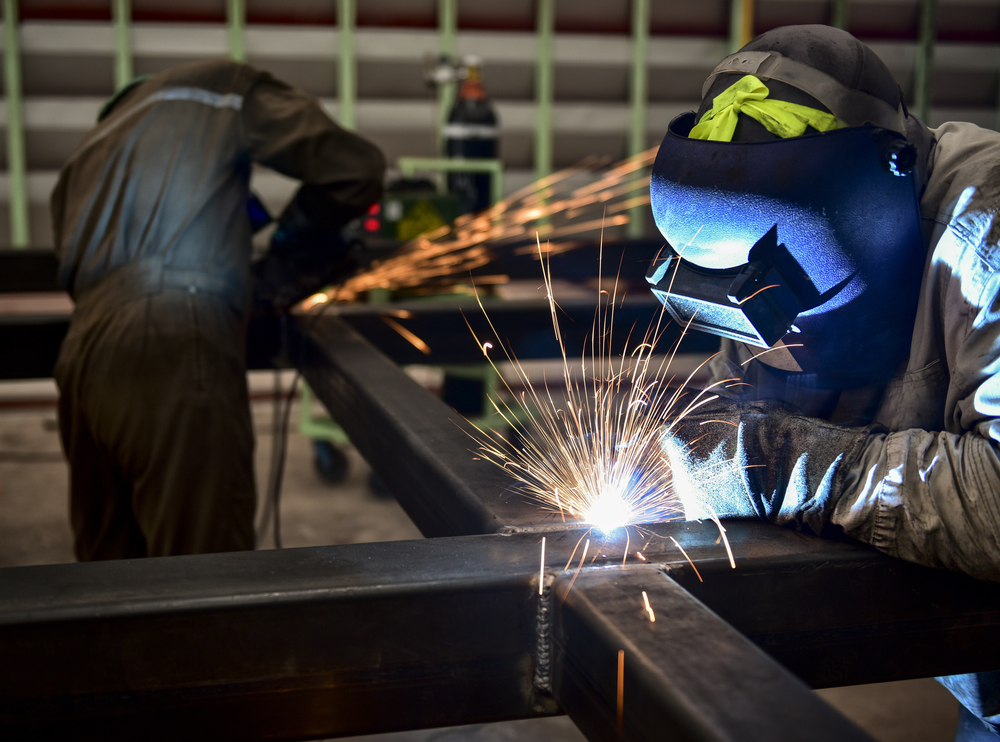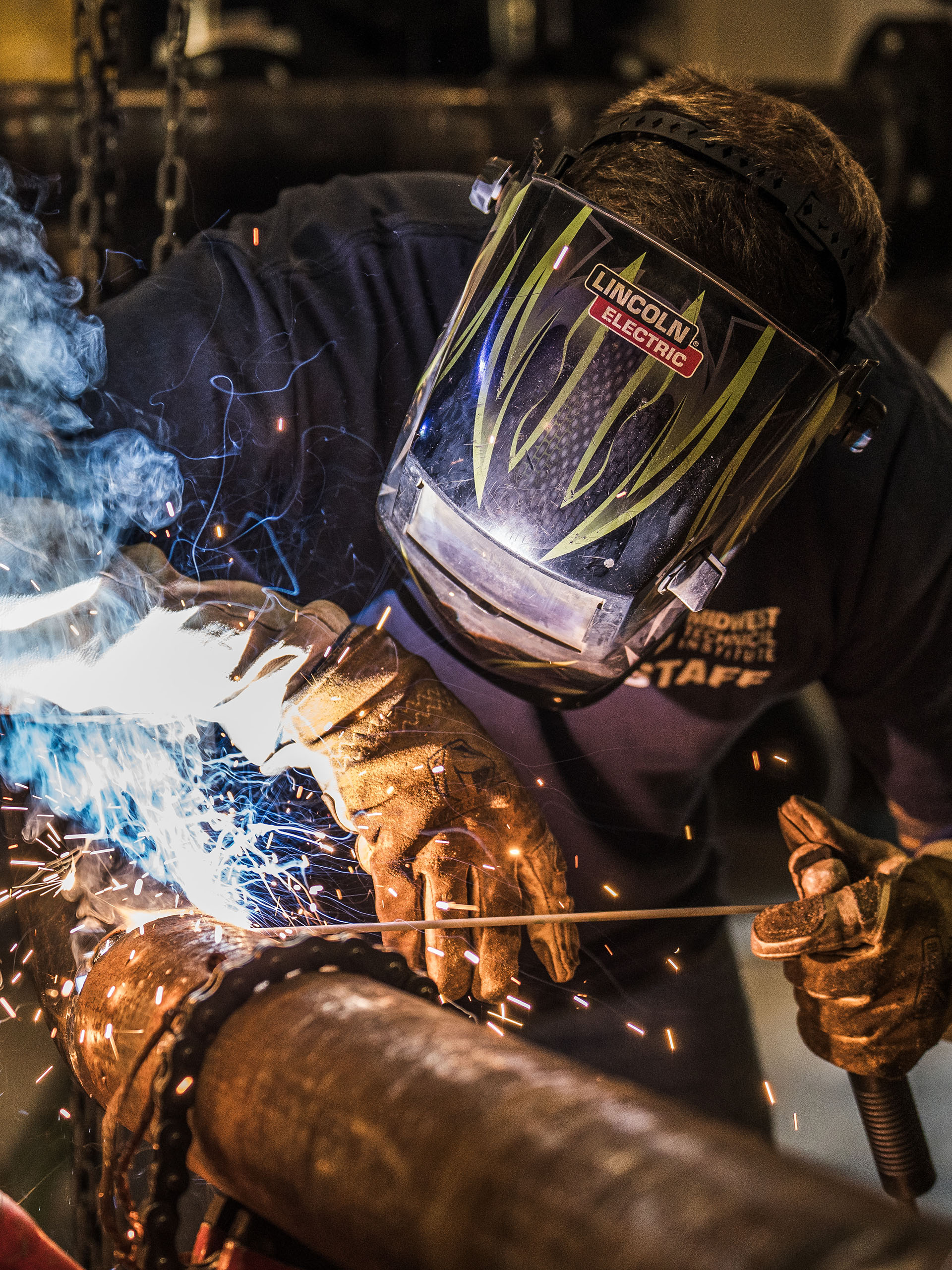Red flags in welding repair and what Belgrade can do about them
Usual Welding Repair Work Issues and How to Address Them Efficiently
Welding fixings typically encounter a range of problems that can threaten the stability of the end product. Usual problems consist of insufficient infiltration, porosity, and misalignment, among others. Each defect presents distinct obstacles that require specific approaches for resolution. Recognizing these concerns is vital for welders intending to enhance their end results and skills. This discussion will certainly discover these usual welding repair service concerns and effective methods to resolve them.
Insufficient Penetration
Inadequate penetration occurs when the weld metal falls short to fully fuse with the base product, leading to weak joints and prospective architectural failings. This problem frequently comes from inadequate heat input, incorrect electrode angle, or improper welding rate. Welders might experience insufficient infiltration because of a mistake of the essential criteria for a certain material thickness or kind. In addition, contamination on the base material's surface area can impede efficient bonding, aggravating the issue. To deal with poor infiltration, welders ought to ensure suitable settings on their equipment and preserve a clean job surface. Regular inspection of welds is suggested to recognize any type of deficiencies early, enabling timely adjustments and the prevention of endangered architectural honesty in welded settings up.
Porosity
Porosity is a typical problem in welded joints that shows up as tiny gas bubbles entraped within the weld metal. This flaw can endanger the stability of the weld, causing lowered strength and possible failure under tension. Montana Mobile Welding and Repair Belgrade Fabrication. Porosity normally occurs from contamination, dampness, or inappropriate welding methods, which enable gases to leave into the liquified weld swimming pool. To address porosity, welders must assure correct surface prep work, maintain a clean working atmosphere, and use appropriate welding parameters. Additionally, choosing the best filler product and shielding gas can mitigate gas entrapment. Routine assessment and testing of welds can help determine porosity early, ensuring prompt restorative actions are taken, thereby maintaining the quality and integrity of the welded structure
Imbalance
Misalignment in welding can emerge from various variables, including inappropriate setup and thermal growth. Comprehending the origin is vital for effective resolution. A number of improvement strategies are offered to straighten components and guarantee structural honesty.
Reasons for Misalignment
Welding misalignment frequently comes from a selection of underlying problems that can jeopardize structural stability. One key reason is incorrect fit-up of elements prior to welding, which can bring about gaps and irregular surface areas. Variants in thermal growth during the welding process can additionally cause distortion, especially if the materials being signed up with have different coefficients of development. Furthermore, inadequate fixturing and securing may stop working to hold components safely in position, leading to movement throughout welding. Poorly maintained devices, consisting of welding makers and devices, may introduce disparities in the weld bead, further adding to misalignment. Finally, operator error, coming from inadequate training or experience, can additionally play a significant role in creating misaligned welds.
Correction Methods Available
Dealing with imbalance successfully requires a mix of restorative techniques tailored to the certain issues handy. One usual technique is using fixtures or jigs to hold parts in the appropriate setting during welding, guaranteeing regular positioning. In addition, preheating the materials can help in reducing distortion and enhance fit-up. For significant imbalance, mechanical adjustment techniques, such as utilizing hydraulic jacks or clamps, can be utilized to fix the placement before welding. Post-weld warmth therapy may additionally be essential to soothe anxieties brought on by imbalance. Cautious assessment and change during the arrangement stage can stop misalignment problems from becoming significant troubles, advertising a smoother welding process and improving total structural honesty.
Distortion
Distortion is a typical challenge in welding that can emerge from various aspects, including unequal heating & cooling. Recognizing the causes of distortion is important for carrying out reliable prevention methods. Addressing this problem not just improves structural honesty but also boosts the overall quality of the weld.
Root causes of Distortion
When subjected to the intense warm of welding, materials typically undertake modifications that can cause distortion. This sensation primarily develops from thermal development and tightening during the welding process. As the weld location warms up, the product broadens; upon air conditioning, it gets, which can create inner stress and anxieties. Additionally, irregular heating across a workpiece can exacerbate these anxieties, resulting in bending or flexing. The sort of material likewise plays a significant duty; metals with varying thermal conductivity and coefficients of expansion may respond in different ways, resulting in unpredictable distortions. In addition, inadequate joint layout and poor fixturing can add to misalignment throughout welding, enhancing the chance of distortion. Recognizing these causes is essential for efficient welding fixing and prevention methods.
Avoidance Techniques
Efficient prevention methods for distortion during welding concentrate on regulating heat input and guaranteeing proper why not find out more joint design. Keeping a regular warm input helps to lessen thermal growth and contraction, which can result in distortion. Using techniques such as pre-heating the work surface can likewise decrease the temperature slope, advertising consistent home heating. In addition, choosing appropriate joint styles, such as T-joints or lap joints, can boost security and lower stress focus. Executing correct fixturing to protect the workpieces in place better help in preserving positioning throughout the welding procedure. Staggered welding series can disperse warmth much more equally, protecting against localized distortion. By applying these techniques, welders can substantially decrease the possibility of distortion and enhance the overall high quality of their welds.
Splitting
Fracturing is an usual concern come across in welding repair work, typically resulting from various aspects such as incorrect cooling rates, product selection, or inadequate joint preparation. The incident of cracks can significantly endanger the integrity of the weld, bring about prospective failings during operation. To address this concern, welders have to first examine the origin triggers, guaranteeing that materials work and suitably selected for the details application. In addition, regulating the air conditioning rate throughout the welding procedure is crucial; fast air conditioning can generate tension and bring about splitting. Proper joint design and prep work likewise contribute to decreasing the danger. Applying these techniques can enhance weld quality and longevity, ultimately reducing the likelihood of splitting in completed weldments.

Incomplete Blend
A considerable issue in welding repairs is insufficient combination, which happens when the weld metal does not adequately bond with the base product or previous weld passes - Montana Mobile Welding and Repair Welding. This issue can result in weak points in the joint, potentially jeopardizing the stability of the welded framework. Aspects contributing to insufficient blend consist of inadequate warmth input, inappropriate welding technique, and contamination of the surface areas being joined. To you can try these out address this issue properly, welders ought to ensure correct pre-weld cleaning and surface area prep work, along with change their welding criteria to attain adequate penetration and blend. Regular evaluation throughout the welding procedure can additionally assist recognize incomplete combination early, enabling timely rehabilitative steps to improve the overall top quality of the weld
Overheating
While welding repair services can enhance structural honesty, overheating provides a substantial difficulty that can cause product deterioration. Extreme heat during welding can change the mechanical homes of steels, causing minimized stamina, boosted brittleness, and warping. This phenomenon is especially vital in high-stress applications where structural integrity is vital. Recognizing overheating can involve aesthetic inspections for staining or distortion, along with keeping track of temperature during the welding procedure. To mitigate the risks linked with overheating, welders should employ ideal strategies, such as regulating warmth input, changing travel speed, and utilizing ideal filler products. In addition, executing pre- and post-weld warm treatments can aid bring back material residential or commercial properties and improve the overall high quality of the repair work, ensuring long-lasting efficiency and safety.
Regularly Asked Inquiries
What Are the Typical Signs of a Welding Problem?

Just How Can I Check My Welds for Top quality?
To evaluate welds for quality, one can make use of aesthetic examinations, ultrasonic screening, and radiographic approaches. Each strategy guarantees structural integrity, identifies defects, and confirms adherence to defined criteria, ultimately enhancing the dependability of the bonded joints.
What Safety and security Preventative Measures Should I Take While Welding?
When welding, one ought to focus on safety by wearing ideal personal protective tools, making sure correct air flow, securing flammable products away, maintaining a clean workspace, and being mindful of surroundings to avoid injuries and crashes.
Can I Fix a Weld Without Remodeling the Entire Joint?
Repairing a weld without renovating the entire joint is feasible, depending on the damages (Montana Mobile Welding and Repair Welding). Techniques such as grinding, including filler material, or making use of a welding procedure can efficiently resolve certain flaws while preserving the surrounding structure
What Equipment Are Necessary for Efficient Welding Repairs?
Crucial devices for efficient welding repairs consist of a welding device, cable brush, mill, protective gear, clamps, and filler products. Each electrofusion welding tool plays a vital function in making sure high quality and safety throughout the repair work procedure. Porosity commonly occurs from contamination, wetness, or inappropriate welding strategies, which permit gases to escape right into the liquified weld pool. Improperly maintained equipment, consisting of welding makers and devices, might present variances in the weld grain, further adding to imbalance. When subjected to the intense warmth of welding, materials frequently go through modifications that can lead to distortion. Cracking is a common problem run into in welding repair work, frequently resulting from various factors such as improper cooling prices, product option, or poor joint prep work. A considerable problem in welding repair work is incomplete combination, which happens when the weld metal does not appropriately bond with the base material or previous weld passes.